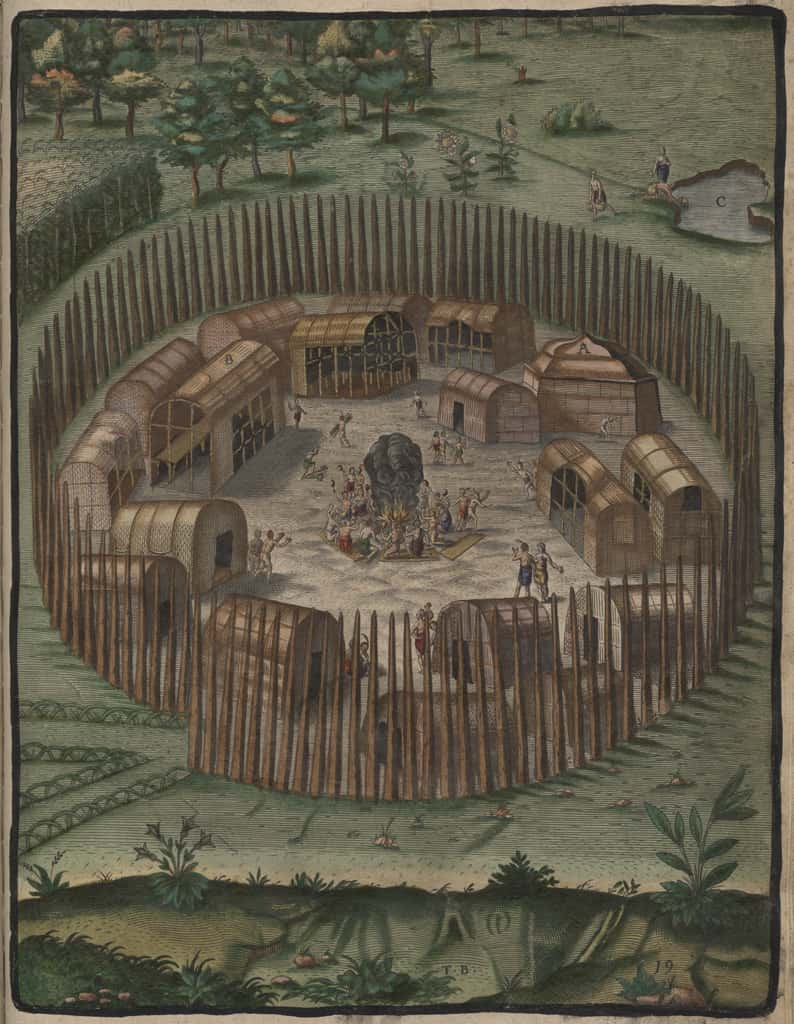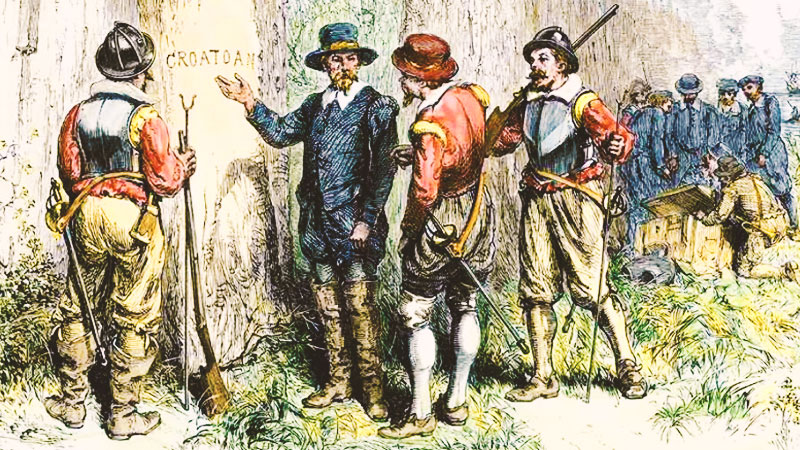The Lost Colony’s Neighbors: Unraveling the Tribes of Roanoke
The Lost Colony’s Neighbors: Unraveling the Tribes of Roanoke

The story of the "Lost Colony" of Roanoke is one that’s captivated imaginations for centuries. It’s a tale of mystery, intrigue, and the enduring power of human curiosity. But while we ponder the fate of the colonists, we often forget about the people who were already living in the land: the Native American tribes who called the Roanoke area home.
Today, we’re going to delve into the fascinating world of these indigenous communities, exploring their history, culture, and potential interactions with the colonists. We’ll try to answer the question: Who were the Native American tribes around Roanoke, and what role did they play in the colonists’ disappearance?
Related Articles: The Lost Colony’s Neighbors: Unraveling the Tribes of Roanoke
- Caddo Nation: A Legacy Of Resilience And Culture
- Unveiling the Native American Heritage of Colorado: Discoveries and Insights
- Unveiling The Tapestry: Exploring The OneFeather American Indian Reservation Map
- Discover the Enchanting World of Indian Reservations in Upstate New York
- Oklahoma’s Tribal Tapestry: A Land Woven With History And Resilience
A Land of Many Tribes
The Roanoke Island area, located in what is now North Carolina, was once a vibrant hub of Native American life. Several tribes inhabited this region, each with its own unique language, customs, and way of life. Here are some of the most prominent tribes that may have encountered the colonists:
-
The Algonquian-Speaking Tribes: The Algonquian language family was widespread across the Eastern Woodlands of North America, and several Algonquian-speaking tribes called the Roanoke area home. These included the Chowanoke, the Croatan, the Secotan, and the Weanoke.
- The Chowanoke: Living on the Chowan River, the Chowanoke were skilled fishermen and farmers. They were known for their intricate pottery and their strong social structure.
- The Croatan: This tribe, whose name echoes through the mystery of Roanoke, resided on the Croatan Sound and the Outer Banks. They were known for their excellent navigation skills and their ability to adapt to the harsh coastal environment.
- The Secotan: Located on the Pamlico River, the Secotan were known for their large villages and their strong trade networks. They were also known for their elaborate ceremonies and their use of shell beads as currency.
- The Weanoke: The Weanoke inhabited the area around present-day Edenton, North Carolina. They were known for their skill in agriculture and their close ties to the Chowanoke tribe.


The Tuscarora: The Tuscarora were a powerful Iroquoian tribe who lived in the interior of North Carolina. While not directly inhabiting the Roanoke area, they had a strong influence on the tribes living there. They were known for their warrior culture and their complex social system.
A Clash of Cultures
The arrival of the colonists in 1585 marked a turning point in the history of the Roanoke area. The colonists, eager to establish a new life in the New World, brought with them their own beliefs, customs, and diseases. This clash of cultures led to both cooperation and conflict between the colonists and the Native American tribes.

- Early Encounters: Initial interactions between the colonists and the Native Americans were generally positive. The colonists relied on the tribes for food, shelter, and guidance. They learned about the local flora and fauna, and they even adopted some of the tribes’ customs.
- The Mystery of Roanoke: The disappearance of the colonists in 1590 remains a mystery. While there are many theories, some speculate that the colonists may have integrated with the Native American tribes. Evidence suggests that the colonists may have intermarried with the Croatan tribe, perhaps even adopting their name.
- The Impact of Disease: The colonists brought with them European diseases like smallpox, measles, and influenza, to which the Native Americans had no immunity. These diseases ravaged the tribes, decimating their populations and disrupting their way of life.
The Legacy of Roanoke
The story of Roanoke is a reminder of the complex relationship between Europeans and Native Americans during the early colonial period. It highlights the importance of understanding the perspectives of all involved, and it underscores the lasting impact of colonialism on the indigenous peoples of North America.
The tribes around Roanoke faced a monumental challenge when the colonists arrived. They had to adapt to a rapidly changing world, navigating the complexities of cultural exchange, disease, and conflict. Their story is not just a footnote in the history of Roanoke; it’s a testament to their resilience and their enduring legacy.
Understanding the Past, Honoring the Present
By learning about the tribes that lived around Roanoke, we can gain a deeper appreciation for the rich history and culture of the indigenous peoples of North America. We can also use this knowledge to foster understanding and respect for the ongoing struggles and triumphs of Native American communities today.
FAQ: What Native American Tribes Were Around Roanoke?
Q: What tribes lived around Roanoke Island?
A: Several tribes inhabited the Roanoke area, including the Chowanoke, Croatan, Secotan, Weanoke, and the Tuscarora (who had a strong influence on the region).
Q: How did the Native American tribes interact with the colonists?
A: Early interactions were generally positive, with colonists relying on the tribes for survival. However, the arrival of European diseases and the clash of cultures led to conflict and hardship.
Q: Is there any evidence that the colonists integrated with the Native American tribes?
A: Some theories suggest that the colonists may have intermarried with the Croatan tribe, perhaps even adopting their name. Evidence for this is limited, but it remains a fascinating possibility.
Q: What happened to the Native American tribes after the colonists disappeared?
A: The tribes continued to live in the area, facing the challenges of disease, displacement, and conflict. Many of them were eventually forced from their lands or absorbed into other tribes.
Q: How can I learn more about the Native American tribes around Roanoke?
A: There are many resources available, including books, websites, and museums. You can also visit historic sites and connect with local Native American communities.
The story of the Lost Colony of Roanoke is a compelling one, but it’s only part of the larger story of the Roanoke area. By acknowledging the contributions and experiences of the Native American tribes who lived there, we can gain a more complete understanding of this fascinating chapter in American history.

Closure
Thus, we hope this article has provided valuable insights into The Lost Colony’s Neighbors: Unraveling the Tribes of Roanoke. We appreciate your attention to our article. See you in our next article!